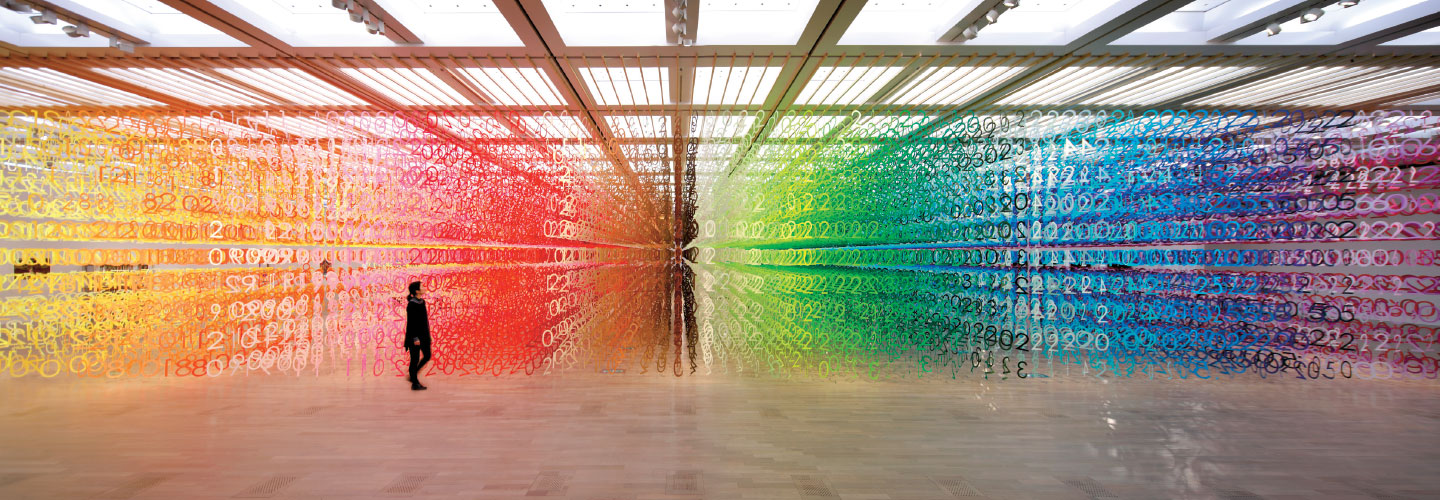An explosion of numbers and colors greeted visitors who walked into a gymnasium-sized gallery at the National Art Center Tokyo in Japan last January. But the strings of 60,000 floating digits that made up the installation were actually carefully arranged in rows.
A tunnel sliced through the middle of the numbers. From there, a viewer could see the colors shift from sunshine yellow to a rich purple-pink. The numbers were so densely packed that a person could barely see someone standing inside the tunnel from the outside!
“In everyday life, we are surrounded by numbers. Everything is created by numbers,” says Emmanuelle Moureaux, the French architect who made the work of art. Forest of Numbers, as the installation is called, is the most recent in her 100 colors series of installations.
Bright colors and numbers greeted visitors to the National Art Center Tokyo in Japan last January. The gymnasium-sized gallery appeared to be full of jumbled numbers. But the strings of 60,000 floating digits that made up the installation were actually carefully arranged in rows.
A tunnel sliced through the middle of the numbers. From there, a viewer could see the colors shift from sunshine yellow to a rich purple-pink. The numbers were so densely packed that a person could barely see someone standing inside the tunnel from the outside!
"In everyday life, we are surrounded by numbers. Everything is created by numbers," says Emmanuelle Moureaux. She’s a French architect who made the work of art. It’s an installation called Forest of Numbers. Moureaux has been making a series of installations called 100 colors. This is the most recent in her series of installations.

